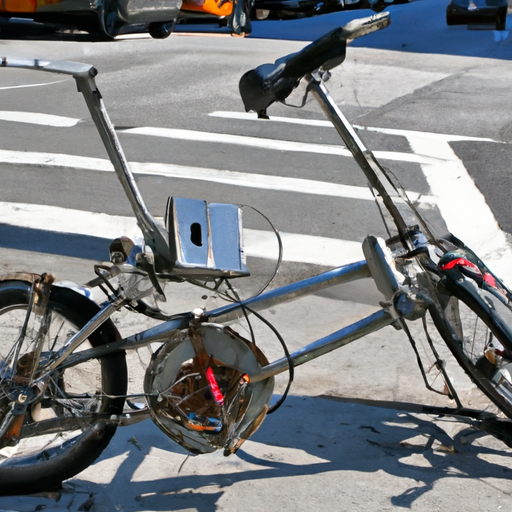Are you considering investing in an electric bike but want to weigh the pros and cons before making a decision? Look no further! In this informative article, we will explore the often-overlooked disadvantages of electric bikes. While they have gained popularity for their eco-friendly and efficient nature, it’s important to understand the potential drawbacks as well. Whether you’re an urban commuter or an off-road adventurer, we’ve got you covered with valuable insights to help you make an informed choice. So, let’s dive into the world of electric bikes and uncover their disadvantages!

1. Limited Range
1.1 Battery Capacity
One of the main disadvantages of electric bikes is the limited range they offer. The battery capacity determines how far you can ride on a single charge, and it varies depending on the model and brand of the bike. Electric bikes with lower battery capacities may only be able to cover shorter distances before needing to be recharged.
1.2 Charging Infrastructure
Another limitation of electric bikes is the availability of charging infrastructure. Unlike traditional bikes that can be refueled anywhere, electric bikes require charging stations to recharge their batteries. Depending on your location, finding a charging station can be a challenge, especially in off-road environments where infrastructure may be limited. This can restrict your ability to go on longer rides or explore remote areas.
2. High Initial Cost
2.1 Expensive Electric Bike Models
One of the biggest drawbacks of electric bikes is their high initial cost. Compared to traditional bicycles, electric bikes tend to be more expensive due to the added cost of the motor and battery. Higher-end models can be particularly pricey, making them less accessible for budget-conscious individuals.
2.2 Battery Replacement Cost
In addition to the initial cost, electric bikes also come with the potential expense of battery replacement. Over time, the performance of lithium-ion batteries used in electric bikes can degrade, requiring them to be replaced. Battery replacement costs can vary, but they can be a significant investment, especially for higher-end bikes. This additional expense should be considered when purchasing an electric bike.
3. Heavy Weight
3.1 Maneuverability
Electric bikes tend to be heavier than traditional bicycles due to the additional components such as the motor and battery. The increased weight can affect the maneuverability of the bike, making it feel less nimble and responsive. This can be particularly challenging in tight spaces or when navigating through crowded areas.
3.2 Transport and Storage
The heavier weight of electric bikes also makes them more challenging to transport and store. If you need to transport your electric bike, whether it’s on a car rack or public transportation, the additional weight can make it more cumbersome and limit your options. Similarly, finding suitable storage for your electric bike at home or in public spaces can be a challenge due to its bulkier size and weight.
4. Maintenance Requirements
4.1 Complexity of Electric Components
Electric bikes have more complex components compared to traditional bicycles, and this can result in increased maintenance requirements. The motor, battery, and electronics all require regular attention to ensure optimal performance. This can include tasks such as checking and adjusting motor settings, monitoring battery health, and troubleshooting electronic issues. If you are not familiar with electric bike maintenance, it may require professional assistance, adding to the overall maintenance cost.
4.2 Regular Battery Maintenance
Maintaining the battery is another aspect of electric bike maintenance that shouldn’t be overlooked. Proper battery maintenance, such as regular charging and storage practices, is essential to ensure its longevity and performance. Failing to properly maintain the battery can result in reduced range and overall battery life, requiring an expensive replacement sooner than expected.

5. Limited Availability of Charging Stations
5.1 Urban vs Off-Road Environment
The availability of charging stations can be a significant drawback for electric bike riders, especially in off-road environments. While urban areas may have a relatively higher number of charging stations, off-road trails and remote locations may lack the necessary infrastructure. This can limit your ability to go on longer rides or explore areas that don’t have convenient charging options nearby.
5.2 Charging Station Networks
Even in areas with charging stations, the issue of compatibility arises. Different electric bike brands and models may require specific charging stations or connectors, which can be inconvenient if the charging infrastructure isn’t standardized. This lack of a unified charging station network further limits the flexibility and convenience of owning an electric bike.
6. Noise
6.1 Motor Noise
One noticeable drawback of electric bikes is the motor noise they produce. While generally quieter than combustion engines, electric bike motors can still generate some level of noise, particularly at higher speeds. This can be a concern for riders who prefer a quieter and more peaceful biking experience.
6.2 Sound in Relation to Safety
The noise produced by electric bikes can also have safety implications. Pedestrians and other road users may not hear electric bikes approaching, especially in urban environments with background noise. This can pose a potential risk in situations where auditory cues play a crucial role in ensuring safety on the road.

7. Lack of Physical Exercise
7.1 Reduced Physical Effort
One of the criticisms of electric bikes is that they reduce the physical effort required to ride compared to traditional bicycles. With the assistance of the motor, riders might be less engaged in pedaling, leading to a decrease in physical exertion. This can be a disadvantage for those who are looking to incorporate cycling as part of their fitness routine or to challenge themselves physically.
7.2 Fitness Benefits
While electric bikes may reduce physical effort, they still offer some fitness benefits. Riding an electric bike can still provide cardiovascular exercise, especially if the rider chooses to pedal without relying solely on the motor. Additionally, electric bikes can be a great option for individuals who are less physically fit or have physical limitations, as they allow them to enjoy cycling without excessive strain.
8. Theft Risk
8.1 Attractive to Thieves
Electric bikes can be an attractive target for thieves due to their higher value compared to traditional bikes. Their higher initial cost and potential resale value make them appealing targets for theft. If proper security measures are not in place, there is a greater risk of losing your electric bike to theft.
8.2 Security Measures
To mitigate the risk of theft, it is essential to invest in proper security measures for your electric bike. This can include using high-quality locks, opting for secure parking areas, and registering your bike’s serial number. Additionally, some electric bikes are equipped with anti-theft features such as GPS tracking, which can help locate the bike in the event of theft.

9. Riding Restrictions
9.1 Legal Limitations
There may be legal limitations and regulations pertaining to electric bikes, depending on your location. Different countries and regions have specific laws regarding electric bike classification, speed limits, and age restrictions. It is important to be aware of these regulations to avoid any legal repercussions while riding an electric bike.
9.2 Trail Access
Off-road trails or natural parks may have specific restrictions on electric bike access. Traditional bicycles may be allowed while electric bikes are prohibited due to concerns about environmental impact, trail erosion, or potential conflicts with other trail users. Before planning an off-road adventure, it is crucial to research and understand the trail access rules for electric bikes in your desired area.
10. Potential for Overdependence
10.1 Reliance on Electric Power
One potential drawback of electric bikes is the reliance on electric power. If the battery runs out or malfunctions, you may be left with a heavier and less efficient traditional bike. This reliance on the electric motor can limit your flexibility and mobility, especially if charging stations are not readily available.
10.2 Ability to Ride Without Motor Assist
With traditional bicycles, you can always pedal without relying on any external power sources. However, electric bikes may not provide the same experience without the motor assist. Some models may have higher resistance when pedaling without motor assistance, making the experience less enjoyable for those who prefer a more traditional cycling experience.
In conclusion, while electric bikes offer numerous advantages, they also come with some disadvantages to consider. These include limited range due to battery capacity and the availability of charging infrastructure, high initial cost, heavier weight affecting maneuverability, increased maintenance requirements, limited availability of charging stations, motor noise, decreased physical exercise, theft risk, riding restrictions, and the potential for overdependence on electric power. Understanding these drawbacks can help you make an informed decision when considering whether an electric bike is the right choice for you.




